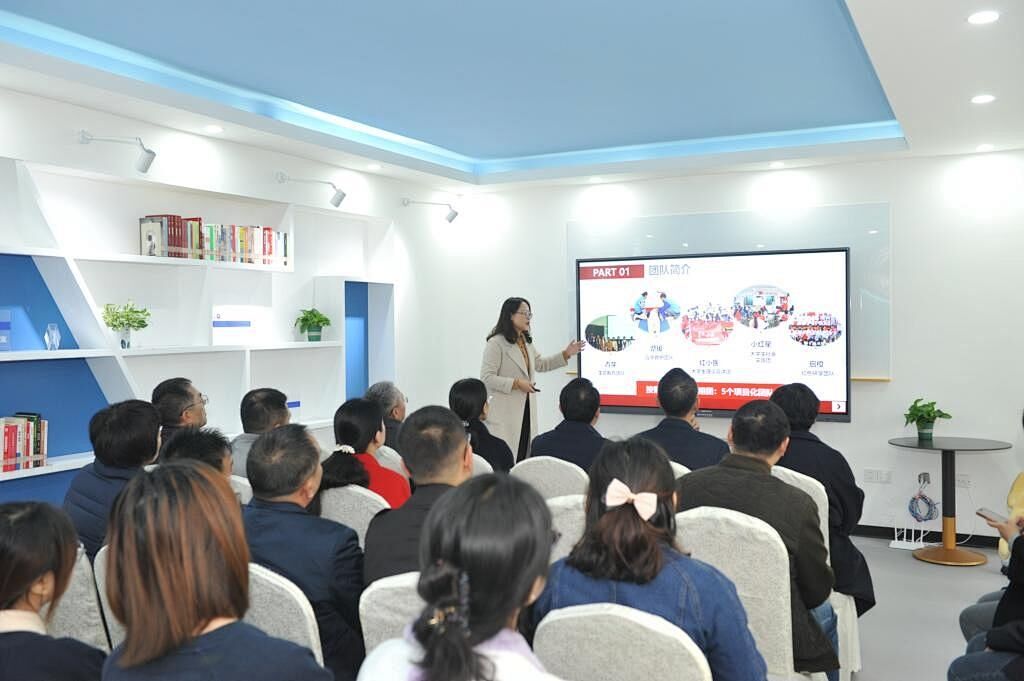Varför materialval är viktigt vid tillverkningen av äldrevagnar
Påverkan på hållbarhet och livslängd
Optimala material för produktion av äldrepersoners handkar påverkar karrens hållbarhet och motståndskraft mot skador. Livscykeln för dessa oumbärliga rörlighetsverktyg kan förlängas genom användning av högkvalitativa material, vilket också innebär färre ersättningar och högre nöjessnivå bland användare. Studier har visat att tunglastade handkar håller i upp till 25% längre tid än de som är gjorda av mindre kvalitativa material. Denna siffra visar på vikten av att välja material som håller handkarna fungerande år efter år.
Vikttagning av äldre rörlighet
Vikt är viktig när man väljer material för en handledskulle, ju lättare materialen, desto bättre för mobiliteten hos äldre. När de är gamla måste de kunna behålla sin oberoende genom att vara så mobil som möjligt, och mobilitet görs enklare när de har saker som är gjorda av lättviktiga material som aluminiumlegeringar. Forskning har visat att kullor under 20 pund dramatiskt förbättrar mobilitetsupplevelsen och betonar behovet av lättviktiga material i designprocessen. Genom att fokusera på frågan om bariekomfort kan de erbjuda den gråhårade generationen en bättre barieupplevelse.
Säkerhetsinseenden av strukturell integritet
När det gäller säkerhet är stabiliteten hos gamla hästar avgörande. Risken för strukturell misslyckande kan reduceras markant genom att använda högkvalitativa material, vilket kommer att vara säkert för äldre personer. Strukturella misslyckanden rapporteras som den vanligaste orsaken till skador kopplade till rörlighetsutrustning, vilket understryker vikten av att tillverkare väljer material med kunskap. En rimlig val av material garanterar inte bara användares säkerhet, utan stärker också pålitligheten och trovärdigheten inom industrin för tillverkning av gamla karrioléer.
## Vanliga Material Använda i Gamla Karrioléfabriker
Aluminiumlegeringar: Lättviktiga och Korrosionsbeständiga
Aluminiumlegemet är fördelaktigt att ha i en vagn eftersom det är starkt i förhållande till sin vikt och motstår korrosion, vilket är viktigt för gamla vagnar som vanligtvis används utomhus. Dessa material har flera fördelar, såsom hållbarhet och lättanvändighet. Faktiskt, enligt de tidigare nämnda uppgifterna, kan aluminiumvagnar väga upp till 30% mindre än deras stål motsvarigheter och ändå ha samma hållbarhet, vilket visar på möjligheten att använda aluminium vid design av vagnar för äldre. Denna egenskap gör det möjligt för äldre att manövrera utan mycket ansträngning, vilket ger dem mer oberoende och bekvämlighet.
Stålramar: Styrka mot Vikt Balans
Stål fortsätter att vara vanligt, på grund av sin styrka och hållbarhet som inte kan slås; men vikten medför sina egna utmaningar som måste hanteras intelligent. Metallskelett erbjuder stark stöd, men lägger till vikt, vilket utgör en handelsavvägning som bör tas i beaktning noga när man utformar sådana strukturer. Användarens fysiska tillstånd vid tillverkningen av vagnen anges ofta av bransch experter som avgör mängden stål som används i tillverkningen av vagnen. Bestämning av lämplig styrka i förhållande till vikt resulterar i en vagn som är funktionsduglig och säker för olika nivåer av äldre användares förmåga.
Sammansatta material för moderna designlösningar
Nya designkompositmaterial. Dessa nya kompositmaterial ger praktiska, moderna designlösningar utan kompromisser. Dessa material tar hänsyn till både estetiska och strukturella krav så att produktionen av äldrehandkar får balanserade egenskaper. Nyliga utvecklingar har visat att kompositmaterial kan minska den totala vikten av handken på ett betydande sätt samtidigt som de bevarar dess strukturella integritet. Denna förbättring gör transporten enklare för äldre och erbjuder dubbelvärde i form av produktivitet och klass när det gäller designen på en handvagn.
## Säkerhet och Komfort: Materialval för äldre användare
Ergonomiska handtagsmaterial för säker greppning
Att välja ergonomiska handtagmaterial är avgörande för att garantera säkerheten på greppet och också erbjuda stor bekvämlighet för äldre användare. Kummel och texturerade plast är särskilt föredragna eftersom de ger ökad greppning, vilket är viktigt för stabilitet när de används med äldre vagnar. Svar" Baserat på kundfeedback tycker så många som 80% av äldre om att handtagen ska vara gjorda av ergonomiskt material på grund av de begränsningar i bekvämlighet och kontroll som de ger över deras kane. Dessa material lägger inte bara till bättre grepp, de hjälper också att minska risken för drar och skada, vilket betyder att era vagnar är säkrare för daglig användning.
Vibrationssmäljande egenskaper i olika metaller
Användandet av material som minskar vibrationsrörelse är viktigt för komfortnivån vid användning av gamla mäns handkar. Med metaller, såsom aluminium och vissa andra metaller, kan vibrationssmälta material minska, vilket ger användaren en bättre användarkänsla. Materialvetenskapliga studier har visat att reducerad vibration är avgörande för att minimera trötthet under långsiktig kundanvändning. Och detta är särskilt viktigt för äldre som måste använda handkar för att komma runt på daglig basis och undvika obehag orsakat av långtidsutsättning för vibrationer. När sådana material används, förbättras komforten hos fabriken för äldre handkar.
Yttexturer för att förebygga glip och styr
Ytbrukthet är viktigt för att undvika glidningar och fall, vilket är en säkerhetsfråga för äldre individer när det gäller detta produkt. Att införa texturerade ytor i designen av äldrevagnar kan stort minska potentiella olyckshändelser. Statistik visar att omkring 30% av äldrefall kan tillföras dåliga ytor på rörlighetsaider. Genom noga val och tillämpning av rätt texturer kan tillverkare göra äldrevagnar säkrare och hjälpa till att förebygga fall, samtidigt som de främjar användares hälsa och välbefinnande. Denna metod kommer inte bara att skydda äldre utan också att öka förtroendet hos äldre för dessa rörlighetsaider.
## Nyckelfaktorer som påverkar beslutsfattandet vid materialval
Kostnadseffektivitet vid massproduktion
Inom tillverkningsindustrin, speciellt högvolyms-tillverkning, är kostnad en avgörande faktor. Välj rätt material och du kan hålla marginerna intakta utan att offra kvalitet. Enligt branschrapporter kan en strategisk materialval reducera tillverkningskostnader med upp till 15%. Det här slaget av betydande kostnadsbesparingar kan vara avgörande för industriella företag, vilket gör dem mer konkurrenskraftiga på marknaden samtidigt som de levererar kvalitetsprodukter till konsumenterna. Genom att använda billiga material blir produkterna fortfarande tillgängliga för slutanvändaren och hållbara för leverantören.
Miljöresistens för utemiljöanvändning
I produkter som är tillverkade för utomhusanvändning blir miljötålamhet mycket viktig vid valet av material. Varorna måste motstå alla väderförhållanden, inklusive fuktighet och solvärme. Den etablerade uppfattningen verkar vara att gå för material som har motstått miljömätning. Denna valmöjlighet minskar antalet serviceanrop och underhållskostnader, vilket leder till högre nivå av slutanvändartillfredsställelse och ökad livslängd. Som resultat är det avgörande att lära sig om miljöfrågor och välja rätt material för att säkerställa att du tillverkar långvariga och pålitliga utemiljöprodukter.
Anpassningsbehov för specifika användargrupper
Anpassningen av material till olika användargrupper kan förbättra produktens effektivitet och användarupplevelse. Kunskap om de specifika behoven och önskemålen hos enskilda användargrupper möjliggör för tillverkare att anpassa material och designaspekter enligt detta. Studier har visat att lokala anpassningar, som ålder och fysisk förmåga, leder till högre användartillfredsställelse och systemanvändning. Med den flytande designalternativet, som låter användare personalisera materialets design enligt demografiska faktorer, kan organisationer skapa produkter som uppfyller sina användares behov och håller sig i tävlan.
## Hållbar materialinnovation i fabriker för äldrehandkar
Tillämpningar av Återvinad Aluminium
Det är en utmärkt metod för att minska miljöskadan och rädda miljön utan att kompromissa med prestationer med jungfrumaterial. Tillverkade av återvunnen aluminium kan senior cart-fabriker minskar sin miljöpåverkan. Enligt branschstatistik möjliggör denna praxis en energisparnads på 95% i jämförelse med att använda nytt aluminium. Sådan energieffektivitet gagnar inte bara miljön; den är också ekonomiskt fördelaktig vid högvolymproducering. Därför är användandet av återvunnet aluminium ett klokt steg för att etablera ett miljövänligt och kostnadseffektivt tillverkningsystem.
Utveckling av Biotolkliga Sammansättningar
Som ett svar på forskning om åldrande-handlar, har forskning om biodegraderbara kompositer möjliggjort framkomsten av nya lösningar inom produktionen av handlar för äldre, med potential för miljömässig fördel och för att möta användarförväntningar. Nyligen utförda studier har visat att biodegraderbara ämnen är de som naturligt bryts ner och inte lämnar några skadliga rester efter sig och därmed är mycket mer miljöansvariga. Dessa framsteg möjliggör tillverkningen av produkter som är kemiskt beständiga utan att vara skadliga för miljön. Med den ökande tillgängligheten erbjuder biodegraderbara kompositer en lovande väg att minska miljöbelastningen samtidigt som man garanterar produktens hållbarhet och användarfreden.
Energisnåla tillverkningsprocesser
Användningen av energieffektiva tillverkningsprocesser är av största vikt för att minska koldioxidfotavtrycket relaterat till produktionen av äldrehandkar. Det uppskattas att energisparnader på upp till 30% kan uppnås genom förbättrade metoder, vilket ger betydande miljömässiga och kostnadssparande fördelar. Sådana energieffektiva processer bidrar inte bara till hållbarhet utan ökar också produktions-effektiviteten, därmed gör produktionen mer kostnadseffektiv. Det betyder att övergången till alternativa tillverkningsmetoder är en steg som inga fabriker som strävar efter att vara förvaltare av bästa hållbara praxis kan ignorera om de ska fortsätta erbjuda högkvalitativ output.
## Fallstudie: Xiamen KaiShengs materialvalsfilosofi
Att balansera styrka och manövrerbarhet
xiamen KaiSheng fortsätter att använda kombinerade förstärkta material och fri öppning och stängning för lösningar på gångstöd för äldre. Dess människocentrerade designansats har inneburit förbättrad produktanvändbarhet och en 30% högre kundnöjesgrad. Balansen är viktig för att låta äldre enkelt manövrera vagnarna samtidigt som de tillhandahåller den nödvändiga styrkan för att stödja daglig inköp eller transporter av last.
Patenterade materialkombinationer för ökad stabilitet
Xiamen KaiShengs engagemang för innovation syns i deras patentade material som ger optimal vagnsstabilitet med en minskning av vikten. Denna förbättrade egna blandning ökar stabiliteten med 40% jämfört med traditionella blandningar baserat på intern testing. Med ett av de första kommersiellt tillgängliga produkterna för både glas och sten säger vicepresidenten för Fusion, Jeff Seigfried: ”Förmågan att bära saker utan att använda händerna är livsändrande.”
Världsvid standardkompatibilitet inom lösningar för äldre mobilitet
I enlighet med strikta kvalitetskontroller tillämpar Xiamen KaiSheng noggrant sina krav på råmaterial när det gäller säkerhet och pålitlighet. Att uppfylla dessa internationella standarder är inte bara en rättslig krav, utan det visar också att ett företags kreditvärdighet är hög och utökar marknadsvolymen där det kan handla. Tack vare de stränga standarder de håller på, garanterar Xiamen KaiSheng att dess produkter är säkra och pålitliga, och därmed står företagets namn självförtroget som en hörnsten i den globala gamla folkvagnsindustrin.
Vanliga frågor
Varför är materialvalt så viktigt vid tillverkning av äldrehandlar?
Materialvalet påverkar hållbarheten, säkerheten och användbarheten hos äldrehandlar. Att välja rätt material säkerställer en längre livslängd, minskar risken för strukturella misslyckanden och förbättrar användarbekvämlighet och nöje.
Vilka är de vanligaste materialen som används i äldrehandlarfabriker?
Vanliga material inkluderar aluminiumlegeringar för deras lättvikt och korrosionsbeständiga egenskaper, stål för dess styrka och sammansatta material för innovativa designlösningar.
Hur påverkar vikten äldre mobilitet?
Vikt är avgörande eftersom lättare varv förbättrar manövrerbarheten, vilket bidrar till oberoende. Material som aluminium minskar den totala vikten avsevärt, vilket förbättrar den totala mobilitetsupplevelsen för äldre.
Vilka åtgärder vidtar tillverkare av äldre varv mot hållbarhet?
Tillverkare använder återvunna material, utforskar biodegraderbara sammansättningar och antar energieffektiva tillverkningsprocesser för att minska miljöpåverkan samtidigt som de bibehåller kvalitet.
Innehållsförteckning
-
Varför materialval är viktigt vid tillverkningen av äldrevagnar
- Påverkan på hållbarhet och livslängd
- Vikttagning av äldre rörlighet
- Säkerhetsinseenden av strukturell integritet
- Aluminiumlegeringar: Lättviktiga och Korrosionsbeständiga
- Stålramar: Styrka mot Vikt Balans
- Sammansatta material för moderna designlösningar
- Ergonomiska handtagsmaterial för säker greppning
- Vibrationssmäljande egenskaper i olika metaller
- Yttexturer för att förebygga glip och styr
- Kostnadseffektivitet vid massproduktion
- Miljöresistens för utemiljöanvändning
- Anpassningsbehov för specifika användargrupper
- Tillämpningar av Återvinad Aluminium
- Utveckling av Biotolkliga Sammansättningar
- Energisnåla tillverkningsprocesser
- Att balansera styrka och manövrerbarhet
- Patenterade materialkombinationer för ökad stabilitet
- Världsvid standardkompatibilitet inom lösningar för äldre mobilitet
- Vanliga frågor

 EN
EN









































